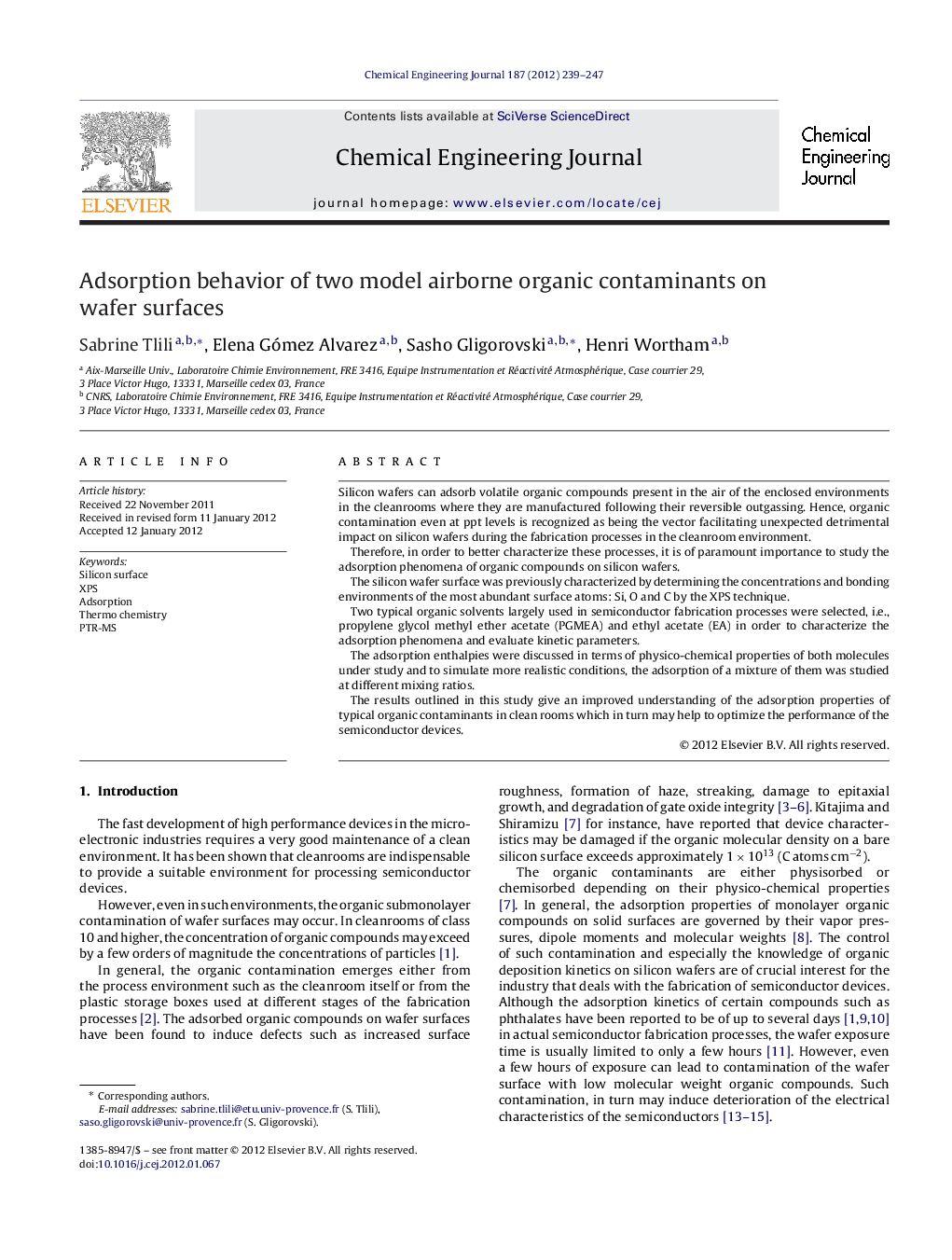| Article ID | Journal | Published Year | Pages | File Type |
|---|---|---|---|---|
| 150060 | Chemical Engineering Journal | 2012 | 9 Pages |
Silicon wafers can adsorb volatile organic compounds present in the air of the enclosed environments in the cleanrooms where they are manufactured following their reversible outgassing. Hence, organic contamination even at ppt levels is recognized as being the vector facilitating unexpected detrimental impact on silicon wafers during the fabrication processes in the cleanroom environment.Therefore, in order to better characterize these processes, it is of paramount importance to study the adsorption phenomena of organic compounds on silicon wafers.The silicon wafer surface was previously characterized by determining the concentrations and bonding environments of the most abundant surface atoms: Si, O and C by the XPS technique.Two typical organic solvents largely used in semiconductor fabrication processes were selected, i.e., propylene glycol methyl ether acetate (PGMEA) and ethyl acetate (EA) in order to characterize the adsorption phenomena and evaluate kinetic parameters.The adsorption enthalpies were discussed in terms of physico-chemical properties of both molecules under study and to simulate more realistic conditions, the adsorption of a mixture of them was studied at different mixing ratios.The results outlined in this study give an improved understanding of the adsorption properties of typical organic contaminants in clean rooms which in turn may help to optimize the performance of the semiconductor devices.
► The silicon wafer surface is characterized by the XPS technique. ► We provide the results of adsorption behavior of organics on silicon wafer. ► The influence of temperature on the adsorption properties is evaluated. ► The critical values of adsorbed organics on wafers are reached at very short times.
